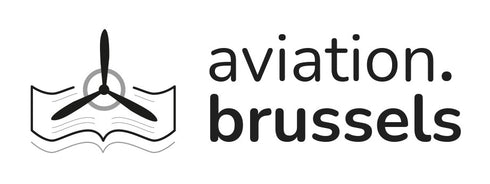AIRCRAFT NOSE ART – 80 YEARS OF AVIATION ARTWORK













Prix régulier 29,00 € TTC 6%
Characteristics
| Book cover finish | Hardcover ( square back binding ) |
| Condition | Used good |
| Number of pages | 144 |
| Published date | 1996 |
| Language | English |
| Size | 28.6 x 1.3 x 28.6 cm |
| Author | J. P. Wood |
| Editor | Smithmark Pub |
Description
Ever since men first went to war in aeroplanes, they have felt the need to decorate their mounts with unofficial and personal markings. Often frowned upon by authority, these colourful decorations have in turn been inspiring, emotive, aggressive, humorous, cynical, brash or even tasteful.
Aircraft Nose Art’ surveys the history of unofficial artwork from World War I to the 1991 Gulf War. The author, himself once a combat pilot, starts with an analysis of the reasons behind this phenomenon and the ways in which it can help the morale of lonely, sometimes frightened, young men. He then considers some of the common themes that have been used through the years by fighting airmen of all nationalities.
The simplest is plain graffiti: the cheeky, humorous, emotive or aggressive phrases that sum up an individual’s or crew’s feelings about their plane, themselves, their loved ones or the war itself. Another popular theme used by airmen from all nations is the cartoon character, often taken from animations by Walt Disney or Warner Brothers, or from comic strips by the likes of Milt Caniff and Charles Schultz.
Animals have been another rich source of material, from the terrifying shark’s mouth to the spectacular semi-official ‘tiger’ schemes seen on some NATO fighters.
Probably the best-known form of nose art, however, is the scantily clad female figure. Paintings of glamorous sirens or demure but revealing damsels are usually associated with American bomber crews in World War II, whose inspiration often came from the Esquire centrefolds by Alberto Vargas or from the Milt Caniff comic strips.
Today’s warplanes are more likely to depict figures reflecting newer ‘science fantasy’ or ‘sword and sorcery’ themes. It seems that as long as men have to fly aircraft into combat, they will adorn their machines with such unofficial artwork.
This survey of the genre is superbly illustrated, with over 250 fascinating photographs, mostly in colour, complemented by superb artworks of some of the most famous nose paintings. This book is a must for air enthusiasts and anyone interested in the thoughts and feelings of men at war.













